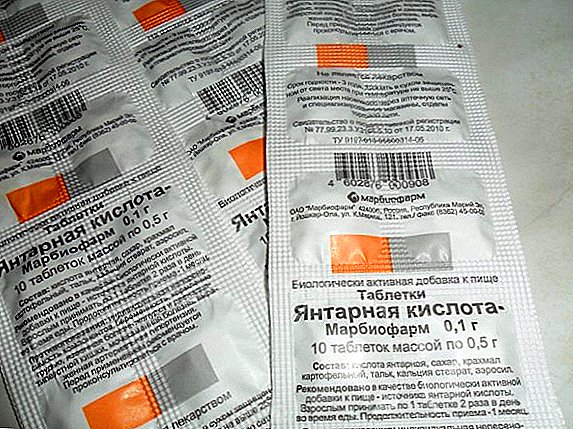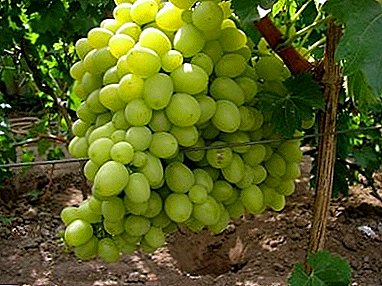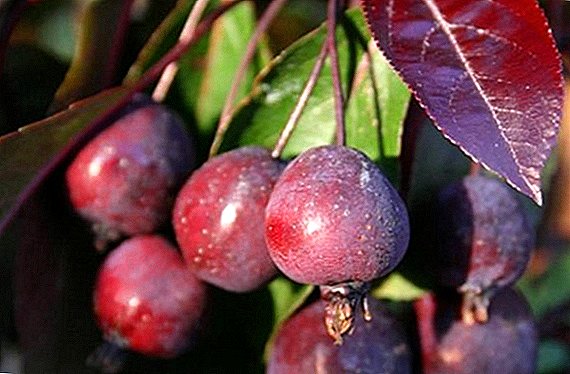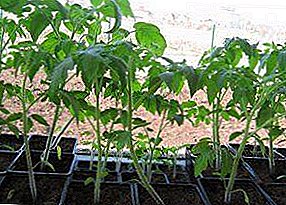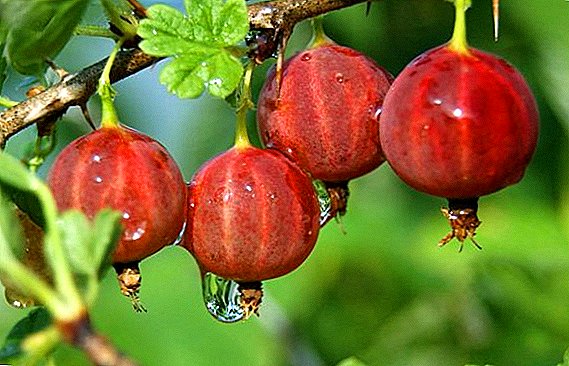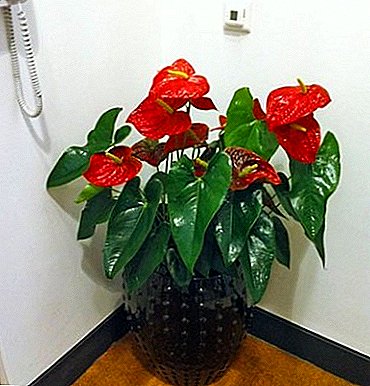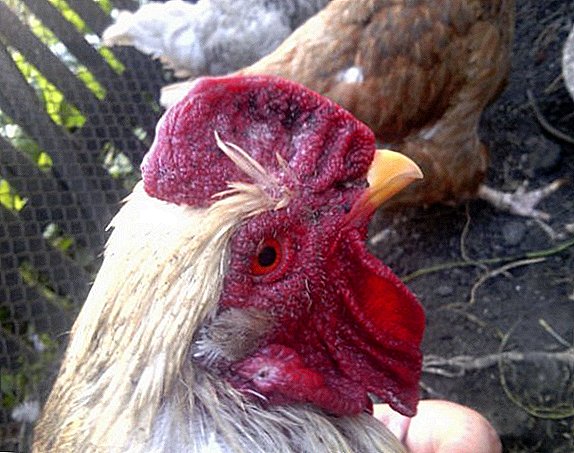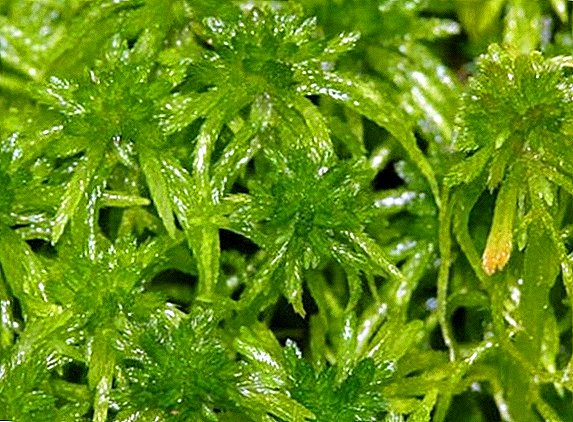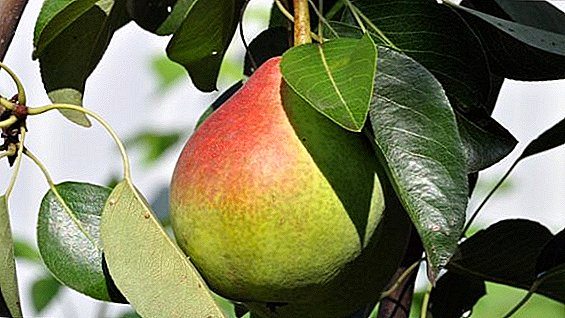 All fruit crops suffer from pest attacks, and pears are no exception. Do not take any means to protect the trees at least recklessly, as this can lead not only to the death of the crop, but the entire tree.
All fruit crops suffer from pest attacks, and pears are no exception. Do not take any means to protect the trees at least recklessly, as this can lead not only to the death of the crop, but the entire tree.
In this regard, novice gardeners are very worried about the question: "What insects are dangerous and what means do you need to use in order for the pests of the pear to leave the tree forever?" And therefore, in order not to cause panic any large butterfly or beetle on a pear, the enemy must be known in person.
Hawthorn
 Hawthorn it is very voracious, and with massive seeding of a tree, the pest will very quickly consume all the flowers, ovaries and greens. After him, he will leave only bare, gnawed branches.
Hawthorn it is very voracious, and with massive seeding of a tree, the pest will very quickly consume all the flowers, ovaries and greens. After him, he will leave only bare, gnawed branches.
The insect hibernates in the house of dry leaves twisted into a tube, which it sticks together with cobwebs. It is very easy to find caterpillar clusters in the late autumn, when the tree has already lost all its leaves.
Important! Timely treatment with insecticides and digging the soil will help to quickly destroy the pest.Good results are obtained by the collection and destruction of spider pest nests. In autumn, after leaf fall, it is recommended to remove all twisted leaves from trees as wintering places for insects. Hawthorn butterflies are often settled for the night on flowering weeds that grow in the garden, from where they can be gathered late in the evening or early in the morning.
Winter moth
 In reality winter moth no less dangerous than the hawthorn. The wingspan of the male insect is 3 centimeters, while the females have underdeveloped wings, so they cannot fly. The insect females have a brownish gray color, a swollen abdomen and long legs.
In reality winter moth no less dangerous than the hawthorn. The wingspan of the male insect is 3 centimeters, while the females have underdeveloped wings, so they cannot fly. The insect females have a brownish gray color, a swollen abdomen and long legs.
Adults reach a length of 28 mm, their body has a yellowish-green color. The caterpillar is not picky and gladly regales on all the fruit trees, nibbling their buds, leaves and flowers.
Important! For the destruction of the pest use the same means as for the fight with the hawthorn.To destroy the winter moth should spray trees before flowering with such insecticidesas "Zolon", "Metathion", "Nexin", "Chlorophos" or "Olekuprit".
In order to completely eliminate the possibility of pest spreading, it should be destroyed along with spider nests, systematically clean the bark from dead areas and moss, as well as liming their trunks.
After the pear has faded, it is necessary to dig up a plot of land adjacent to the trunk, which will help to destroy the cradles of pupating caterpillars.
Excellent results are obtained by imposing trapping belts on the tree trunk, which will not allow the insect females to penetrate the crown, and they will have to lay eggs at the bottom of the tree, where they can be easily destroyed.
Galitsa pear
 Galitsa pear - an insect that often infects pears and deprives us of tasty and fragrant fruits. Adults do not pose any danger to pears, but their larvae can easily destroy the entire crop.
Galitsa pear - an insect that often infects pears and deprives us of tasty and fragrant fruits. Adults do not pose any danger to pears, but their larvae can easily destroy the entire crop.
Pest larvae have a compacted body, a well-developed head capsule and horizontally moving, opposing each other powerful mouth hooks.
Settling in plant tissues, the larvae provoke characteristic gall-like growths in them. The insect affects the fruit ovary and feeds on its pulp, this becomes the reason that over time the fruit turns black, stops its development and falls.
Pear Fruit Galley
Pear Fruit Galley - This is a small insect of brown color, which in appearance is very similar to a mosquito and is about 4 millimeters in size. Insect larvae feed on the tissues of the fruit and leaves of trees.
The pest is harmful primarily to young trees, as well as to those that have been pruned. Also, the pest can wade into the seed chamber, feeding on fetal tissues. 
Important! If a pear gall midge or a pear fruit gall midnight bred in your garden, it is best not to postpone the fight with it for a long time. To destroy the pest, trees are sprayed during the mass laying of eggs with Chlorophos, Phosphamide, or Metaphos.
Pear sawfly
 Insect pest that affects only pears - pear sawfly. An adult has a body length of 5 to 6 millimeters. Females lay one egg in unopened buds, while damaging the ovipositor of the sepal base and receptacle.
Insect pest that affects only pears - pear sawfly. An adult has a body length of 5 to 6 millimeters. Females lay one egg in unopened buds, while damaging the ovipositor of the sepal base and receptacle.
The larvae burrow into the middle of the ovary and feed on its core, after which they transfer to the neighboring fruits. During the period of active feeding, one larva damages from 3 to 4 fruits. It eats away their seed chamber and seeds, with the result that the fruits turn black and fall off over time.
To avoid a massive attack of pests, at the beginning of flowering tree treated with insecticides. If time is missed and the insect has damaged the fruit, then they are shaken off on the litter and buried to a depth of at least 50 centimeters, which avoids further spread of the pest.
Important! To destroy the pest, the tree crown is sprayed with organophosphate compounds, pyrethroids, neonicotinoids. Spraying should be carried out 5 or 6 days before flowering or immediately after its completion.
 In order to avoid the spread of pear sawflies in the garden, one should follow the basic rules of tree care and systematically dig the soil around them; it is also recommended to collect and destroy the insect's web nests.
In order to avoid the spread of pear sawflies in the garden, one should follow the basic rules of tree care and systematically dig the soil around them; it is also recommended to collect and destroy the insect's web nests.Pliers
Pliers like no other type of insect pests can ruin the life of any gardener. Mites are a subclass of arthropods - microscopic pests of the arachnid class that can cause significant damage to plants.
Did you know? If each female tick would survive 50 larvae (in fact, it lays up to 200 eggs), then, giving 15 generations a year, the pests would cover the globe with a two-meter layer.
Brown fruit mite
 Brown fruit mite dangerous to all fruit crops, but its main tree is apple. The female has a wide oval body, with a length of 0.5 to 0.6 millimeters. The body of the male is more elongated, the insect has a reddish-brown color and long thin legs.
Brown fruit mite dangerous to all fruit crops, but its main tree is apple. The female has a wide oval body, with a length of 0.5 to 0.6 millimeters. The body of the male is more elongated, the insect has a reddish-brown color and long thin legs.
The pest avoids direct sunlight and populates mainly the middle and lower part of the tree.
Gall mites
 Gall mites - These are vegetable parasites that often form galls or other damage to plant tissues. The gall mite is a microscopic parasite of yellow, purple or pinkish-white color. It has a round or spindly body and 4 pairs of legs. Insect spread by wind.
Gall mites - These are vegetable parasites that often form galls or other damage to plant tissues. The gall mite is a microscopic parasite of yellow, purple or pinkish-white color. It has a round or spindly body and 4 pairs of legs. Insect spread by wind.
Gall mite gladly regales all fruit trees, but especially he is not indifferent to apple and pear trees.
Red Apple Tick
 Red Apple Tick - Another pest that affects fruit trees. The length of the pest’s body barely reaches 0.6 millimeters, it’s hard not to notice: it has a bright red color. The larvae are born during the flowering of the apple tree, and therefore it seems that the leaves of the tree are covered with reddish bloom.
Red Apple Tick - Another pest that affects fruit trees. The length of the pest’s body barely reaches 0.6 millimeters, it’s hard not to notice: it has a bright red color. The larvae are born during the flowering of the apple tree, and therefore it seems that the leaves of the tree are covered with reddish bloom.
Settling on the leaves, the mites suck the juice out of them, which causes a violation of their water balance, leading to a decrease in the formation of chlorophyll and slowing down the processes of photosynthesis. This causes a weakening of the plant and is the main reason that it produces smaller fruits.
In places of strong insect accumulation galls are often formed, which are separately located swellings..
To avoid tick cultureit is recommended to clean the trees from the old bark in the springtime and carry out their liming. With massive infection can not do without wood treatment with insecticidessuch as "Malathion" or "Trichlormetaphos".
In addition, it facilitates the destruction of ticks using drugs with translaminar properties, which are able to penetrate into the tissues of trees to a shallow depth and do not spread through the vascular system. These drugs include "Abamectin", which has a neurotoxic effect on ticks.
Common Pear Copper
 Common Pear Copper - a dangerous pest that sucks the sap from the leaves of the tree, causing them to curl and fall. The growth and development of the tree slows down, it starts to bear fruit worse, weakens and does not tolerate wintering.
Common Pear Copper - a dangerous pest that sucks the sap from the leaves of the tree, causing them to curl and fall. The growth and development of the tree slows down, it starts to bear fruit worse, weakens and does not tolerate wintering.
With massive infection on the leaves of pear appears honeydewwhich is a fertile environment for development black mushrooms.
To reduce the likelihood of infection of the pear, it is recommended to clean it from dead bark, moss and lichen in the spring. Prevent the spread of the pest will help timely insecticide sprayingsuch as Karbofos, Agrovertin or Decis.
Did you know? Of the popular methods, fumigating the garden with tobacco smoke and spraying the trees with a soap-and-soap solution proved to be excellent. Another unusual method of dealing with a pest is spraying trees with a solution of silicate glue. For spraying, the glue is diluted in water at the rate of 100 grams per 100 liters of water.
Moths
Insects like mothsvery often visit our gardens. The most dangerous for pears are the eastern moth, pear moth and apple moth. Outwardly, these pests are very similar between failures. The butterfly lays eggs inside the flower, and after its larvae are born, the damaged fruits dry and crumble.
Oriental moth
 Oriental moth - a dangerous pest that damages the shoots and fruits of all garden crops. This tiny butterfly with wide rectangular wings. The body of the insect is colored dark blue.
Oriental moth - a dangerous pest that damages the shoots and fruits of all garden crops. This tiny butterfly with wide rectangular wings. The body of the insect is colored dark blue.
The front wings are covered with silvery-white scales, forming subtle wavy transverse stripes. The hind wings have a grayish-brown color and a wide bone edge. The wingspan reaches 14 millimeters.
Pear moth
 Pear moth - it is a moth monophage, it damages only the fruits of pears. The insect has a special passion for early varieties of pears, since their fruits have a softer skin.
Pear moth - it is a moth monophage, it damages only the fruits of pears. The insect has a special passion for early varieties of pears, since their fruits have a softer skin.
The front wings of the moth are painted dark gray, and the rear wings are brownish gray. In July, insect mating occurs, after which the female lays eggs on the fruit of the pear. The larva of the caterpillar gnaws a straight course in the fruit, biting into the seed chamber, gradually eats up all the seeds, which leads to its death.
Did you know? The caterpillar does not go outside and does not creep on the neighboring fruits. Up to five larvae can be in one fruit at a time.
Codling moth
 Agricultural pest codling moth affects the fruits of garden crops such as apples, pears, peaches and plums. The butterfly has a grayish-brown color. The wingspan of an insect can reach 20 millimeters.
Agricultural pest codling moth affects the fruits of garden crops such as apples, pears, peaches and plums. The butterfly has a grayish-brown color. The wingspan of an insect can reach 20 millimeters.
The moth lays greenish-white eggs with a diameter of not more than 1 millimeter. Each of us found in pears, apples or plums of tiny light pink caterpillars with brown heads, capable of quickly destroying the entire crop.
In the fight with moth moth Excellent results are given by agrotechnical techniques, which consist in the destruction of plant residues and the digging of the soil in the stalk zone. To reduce the likelihood of pest spreading, it is necessary to remove falling fruits.
For this purpose, it is recommended to cover the trunk zone with covers, and to drop or take away fallen pears from the site. Good results and gives spraying trees with insecticides, such as Iskra, Karbofos and Fufanon.
As an option, you can use biological type insecticides, for example, "Lepidocide". The installation of hunting belts will also eliminate the pest.
Subcrustary moth
 Subcrustary moth affects almost all fruit trees, these are dangerous pests of the trunk of apple and pear. The insect is capable of infecting all parts of the tree, but especially sapwood, bark and cambium suffer from it, which leads to a decrease in tree growth rates and a decrease in its productivity.
Subcrustary moth affects almost all fruit trees, these are dangerous pests of the trunk of apple and pear. The insect is capable of infecting all parts of the tree, but especially sapwood, bark and cambium suffer from it, which leads to a decrease in tree growth rates and a decrease in its productivity.
When a pest appears, it is necessary to immediately start a war with it, since prolonged ignoring the problem can lead to the complete destruction of the tree.
For warning the appearance of the pest It is recommended to remove the dead bark from the tree every spring and carry out the liming of the trunks. Installing pheromone and light traps also gives good results.
Timely help protect the trees from pests spraying of organophosphorus compounds, mineral oils and pyrethroids.
Moth
Moth - This is another dangerous pest pear, which will not miss the opportunity to try other types of fruit trees. The moth lays eggs, from which then larvae appear about 15 millimeters long, damaging the fruit of the pear, apple, plum and peach.
Fruit Moth
 Fruit Moth - a charming moth, but its larvae will ruthlessly devour your garden. A small pest can cause significant damage to garden trees. Damaged cultures grow poorly, become weak and their productivity decreases.
Fruit Moth - a charming moth, but its larvae will ruthlessly devour your garden. A small pest can cause significant damage to garden trees. Damaged cultures grow poorly, become weak and their productivity decreases.
The larva of the pest reaches a length of about 5 millimeters, it has a dark green color. In places of accumulation of caterpillars on the leaves, the formation of round white mines. The pest eats away the flesh of the leaves and fruits, which causes their death.
Mining moths
 No less dangerous and Mining moths. They hide in the leaves of the tubes. Caterpillars of moths are notable for their excellent appetite: they eat not only the leaves of the tree, but also love to gnaw the passages in the fruits of pears and apples, which leads to their falling off.
No less dangerous and Mining moths. They hide in the leaves of the tubes. Caterpillars of moths are notable for their excellent appetite: they eat not only the leaves of the tree, but also love to gnaw the passages in the fruits of pears and apples, which leads to their falling off.
At the first signs of the appearance of moles, you must immediately declare war on her. Excellent results are obtained by timely cleaning of fallen leaves and spraying trees in the early spring with insecticidal preparations, such as Zolon, Metathion, Nexion, and Phosphamide.
Experienced gardeners are advised to spray the trees with bitter pepper extract and laundry soap.
Important! During insect vegetation, insecticide spraying is ineffective because the pest feeds on the inside of the leaf.
Aphid
Aphid - This is the most frequent guest of our gardens. Many gardeners are annually forced to destroy aphid colonies. Aphids parasitize on plants, feeding on the vital sap of young shoots and infecting plants with dangerous phytoviruses.
Did you know? In total, there are 10 families in nature and more than 4,000 species of aphids, with about 1,000 different species of aphids living in Europe.
Green aphid
 Green aphid - These are ruthless pests of a pear that can lead to the death of a tree. Small insects, settling in the trees, multiply very quickly, the pest is especially not indifferent to the young shoots and absorbs their juices with appetite.
Green aphid - These are ruthless pests of a pear that can lead to the death of a tree. Small insects, settling in the trees, multiply very quickly, the pest is especially not indifferent to the young shoots and absorbs their juices with appetite.
Blood aphid
As the name implies blood aphid has a bright red color. The insect feeds on the sap of garden crops, and if you do not start fighting against insects in time, the branches of the trees will be covered with ulcers, which can cause their death.
Did you know? Blood aphid hit the territory of Europe from North America at the very beginning of the XVIII century.
Until the aphids have multiplied, they destroy it mechanically, in other words, they crush it. But after the pest clings to the dense carpet of the branches and leaves of the plant, the use of insecticides is indispensable.
 For warning spreading aphid early spring trees treated with 25% powdered hexachlororane on phosphate rock or contribute 12% of hexachlorane dust to the soil.
For warning spreading aphid early spring trees treated with 25% powdered hexachlororane on phosphate rock or contribute 12% of hexachlorane dust to the soil.
Also an excellent folk remedy for aphids is considered sprinkling trees with soap and ash solutionwhich is safe for humans, but very dangerous for this small pest.
Flowerbird
Flowerbird - an insect not less widespread than a green aphid. The epidemic of the flower beetle invariably leads to the death of the crop. The color beetle beetle is an insect that is considered a dangerous pest that feeds on the juice of swollen buds of a pear or apple tree.
Pear flower eater
 Pear flower eater - This is an insect from the order of beetles belonging to the weevil family. Such a beetle on a pear is a serious cause for concern.
Pear flower eater - This is an insect from the order of beetles belonging to the weevil family. Such a beetle on a pear is a serious cause for concern.
He bites through the tight cups of flower buds, which have already had time to pour juice, but have not yet burst. This is a real delicacy for the color beetle beetle. The invasion of beetles is the reason that the tree refuses to bloom and as a result - does not bear fruit.
Apple Blossom
 Apple Blossom outwardly very similar to his fellow pear tsvetoeda. This brownish-gray beetle, which has a long head trunk, which he uses to suck the juice from the kidneys. Adults feed on buds and leaves, while their larvae destroy only the flower buds of pears and apples.
Apple Blossom outwardly very similar to his fellow pear tsvetoeda. This brownish-gray beetle, which has a long head trunk, which he uses to suck the juice from the kidneys. Adults feed on buds and leaves, while their larvae destroy only the flower buds of pears and apples.
Clearing the bark in spring and liming the trunks will help to stop the pest invasion. Also, good results will give the installation of glue belts.
Beetle can simply try to shake off the crown of the tree on the bedspread, and then destroy. If the mechanical method did not produce results, then spray the plant with biological pesticides, such as "Decis" or "Kinmic".
Silkworm
Silkworm - a large moth, with a wingspan of up to 8 centimeters. The silkworm caterpillar in length reaches 7 centimeters and has a dark gray or brown color.
Did you know? Insect loves to feast on leaves, ovaries, buds and fruits of pear. The fact that a single caterpillar can eat up to 35 leaves will help to make an approximate picture of the scale of a disaster when a plant is infected with a silkworm..
Ringed silkworm
 Ringed silkworm - a butterfly with a wingspan of 32 to 40 millimeters. The pest has a brick-brown or ocher-yellow color. The body of the insect is densely covered with hairs of a dark yellow shade. The larva in length can reach from 40 to 60 millimeters and has a gray-blue body, covered with dense hair.
Ringed silkworm - a butterfly with a wingspan of 32 to 40 millimeters. The pest has a brick-brown or ocher-yellow color. The body of the insect is densely covered with hairs of a dark yellow shade. The larva in length can reach from 40 to 60 millimeters and has a gray-blue body, covered with dense hair.
Did you know? The insect is dangerous only at the larval stage; adults do not feed.
The caterpillar damages almost all fruit and forest trees. If you do not destroy the pest in a timely manner, it can completely devour the crown of the aft tree.
Gypsy moth
 Gypsy moth It feeds on more than 300 plant species, but its main dish is pear, oak, poplar and apple trees.
Gypsy moth It feeds on more than 300 plant species, but its main dish is pear, oak, poplar and apple trees.
The wingspan of the female can reach 75 millimeters. The body of the insect is covered with thick brown hair, the wings are white, black zigzag stripes are applied on them.
The larva can reach a length of up to 75 millimeters, its body is covered with long brown hairs. It is very voracious, and therefore when an insect is detected, it is necessary to destroy it as soon as possible.
Important! Avoid massive infection with silkworm and coconopad help regular inspection of trees for insect detection. When egg-laying is detected, they must be carefully collected and burned. For massive seeding it is advisable to use insecticides. For these purposes, well suited "Nitrafen". Excellent results are obtained using glue belts, removal of old bark and liming of trunks.
Coconut
 Coconut - It is a large butterfly with a thick hairy body, with a big head and a comb-like mustache. The butterfly has a short life cycle and has an underdeveloped proboscis.
Coconut - It is a large butterfly with a thick hairy body, with a big head and a comb-like mustache. The butterfly has a short life cycle and has an underdeveloped proboscis.
Insect lays eggs in groups. Coconut larvae are not very selective in food, and therefore are happy to absorb the leaves of all fruit trees and even pine needles.
Did you know? If you know exactly what to treat pears in the spring from pests, then you can not worry about the safety of the crop.
Scar
 Scar - common pest. Adult insects are very resistant to adverse factors, which allows them to tolerate a significant decrease in temperature.
Scar - common pest. Adult insects are very resistant to adverse factors, which allows them to tolerate a significant decrease in temperature.
Already after the adult insect is covered with a protective sheath, the effectiveness of the use of insecticides decreases sharply. Externally, the insect looks like an inverted comma, which is colored brown.
In early spring, before the appearance of the kidneys, plants are treated with the DNOC solutionthat allows you to destroy insect eggs in a timely manner. After larvae hatch out of eggs, it is recommended spray trees with insecticides of contact actionFor this purpose, “Decis” or “Kinmic” is perfect.
The main role in preventing the infestation of trees by pests belongs to preventive agrotechnical measures, which consist in removing old bark, liming trunks, collecting and destroying pests nests and digging the soil around the trunk. Only careful attention to trees and timely pest control will help you to get a generous harvest of sweet and fragrant pears.


